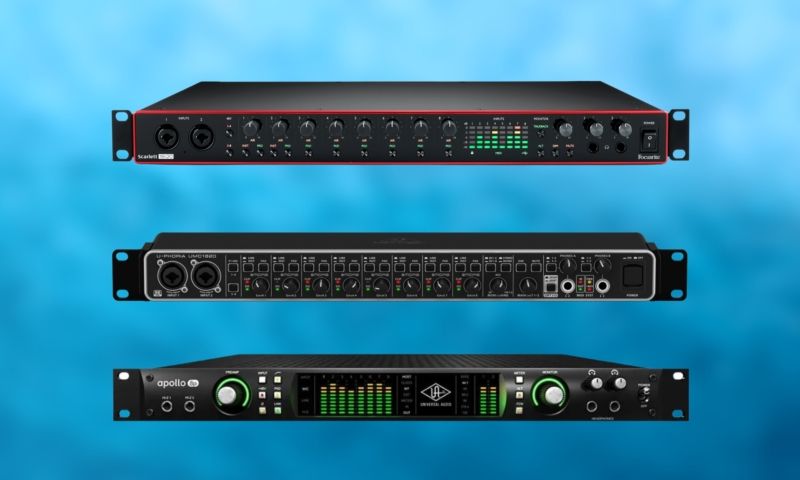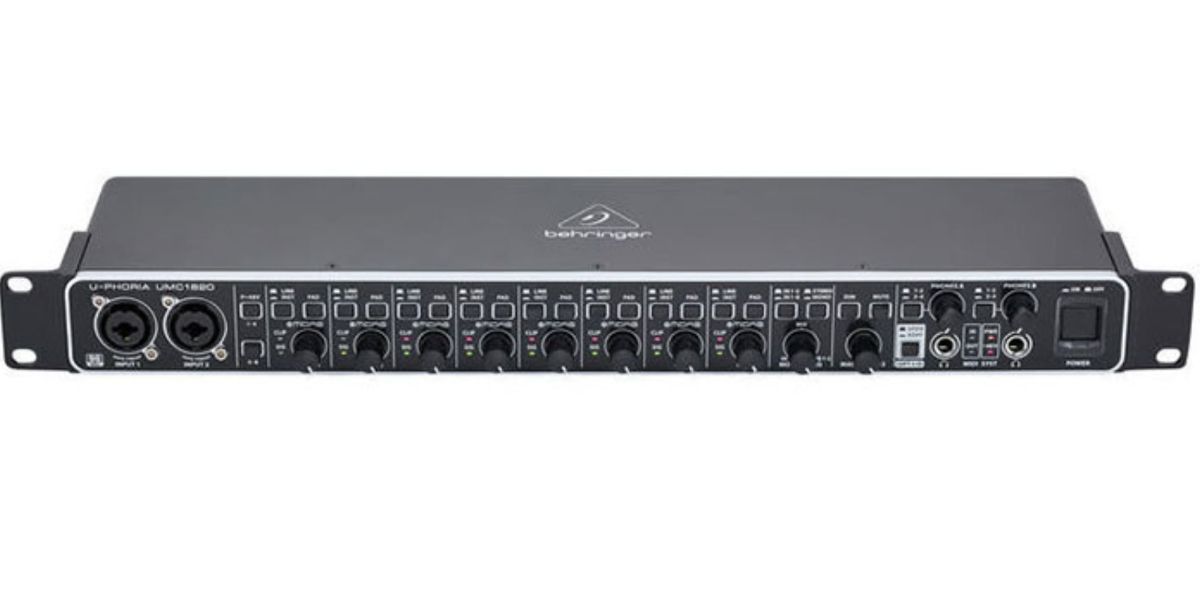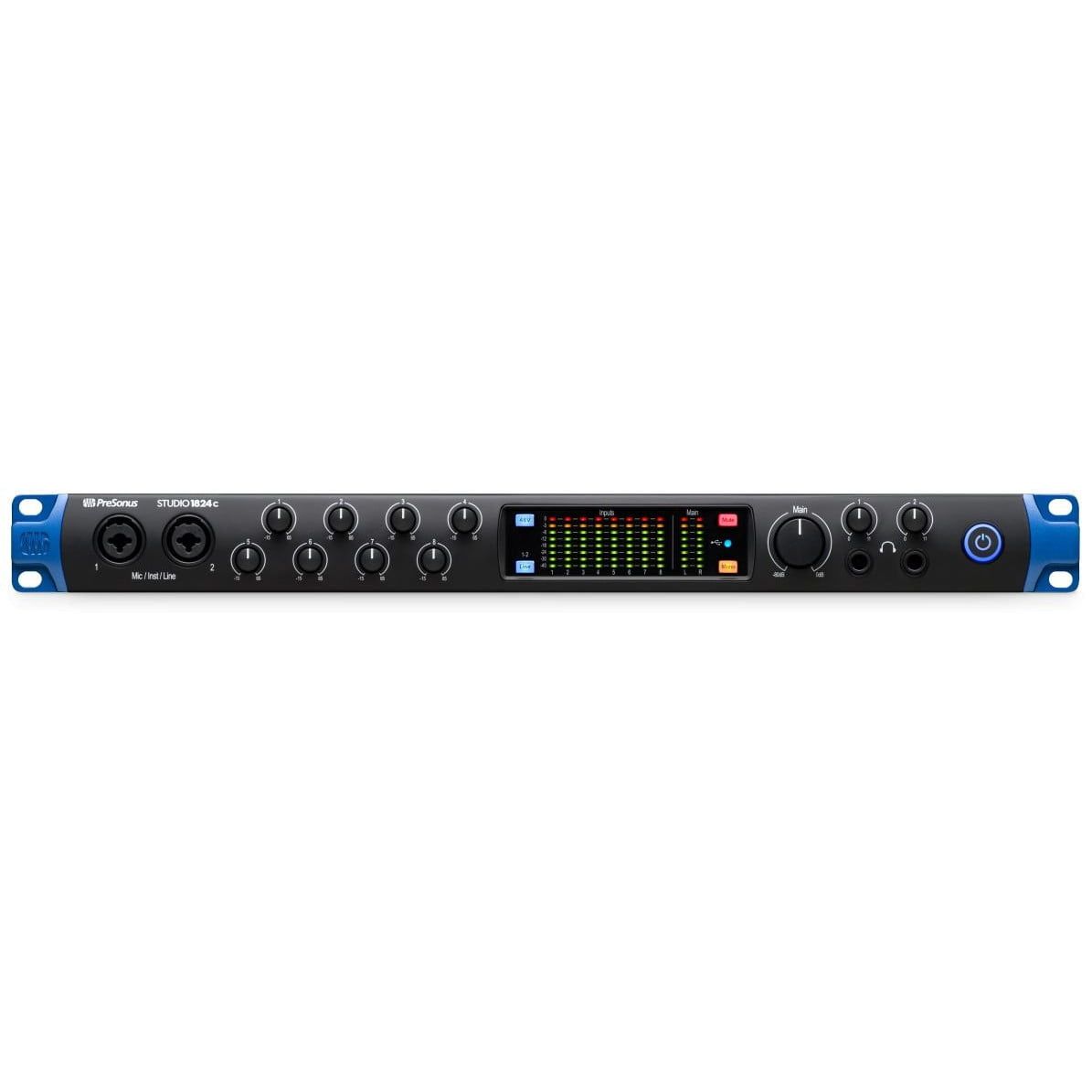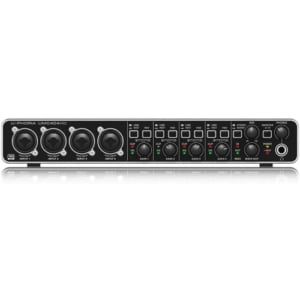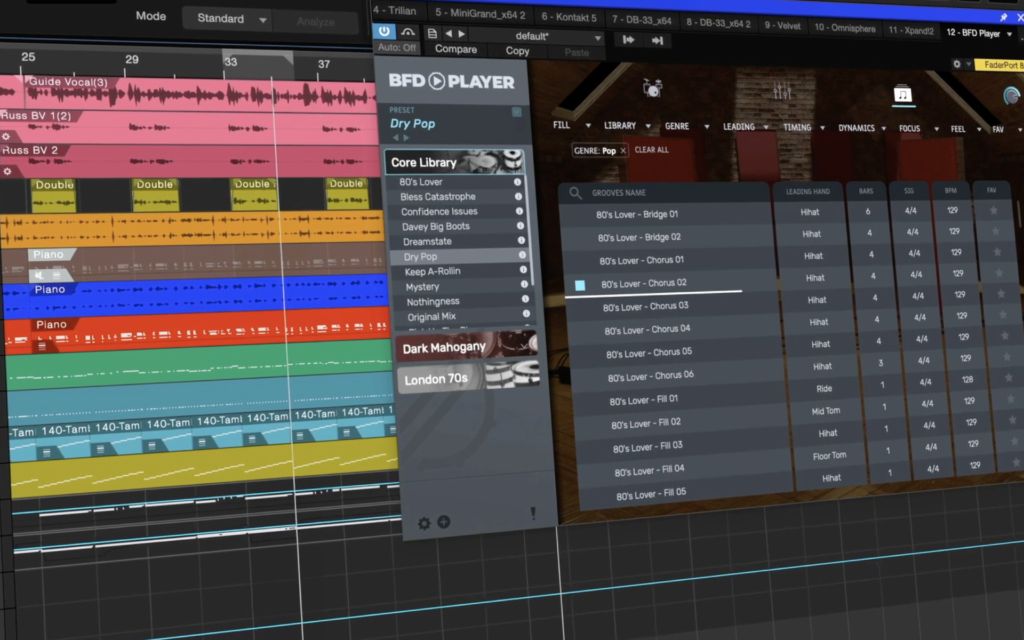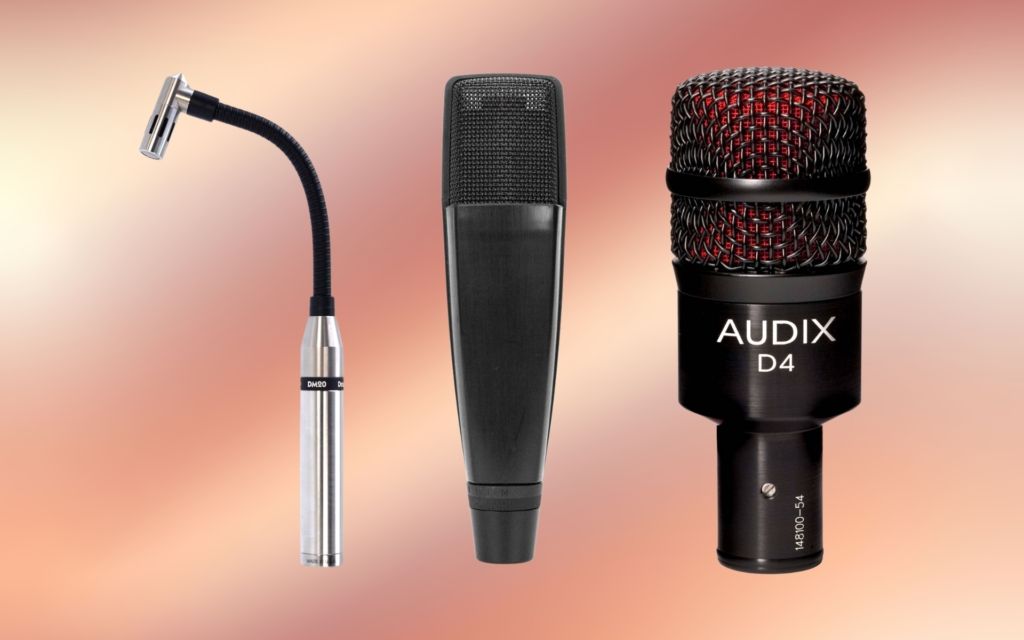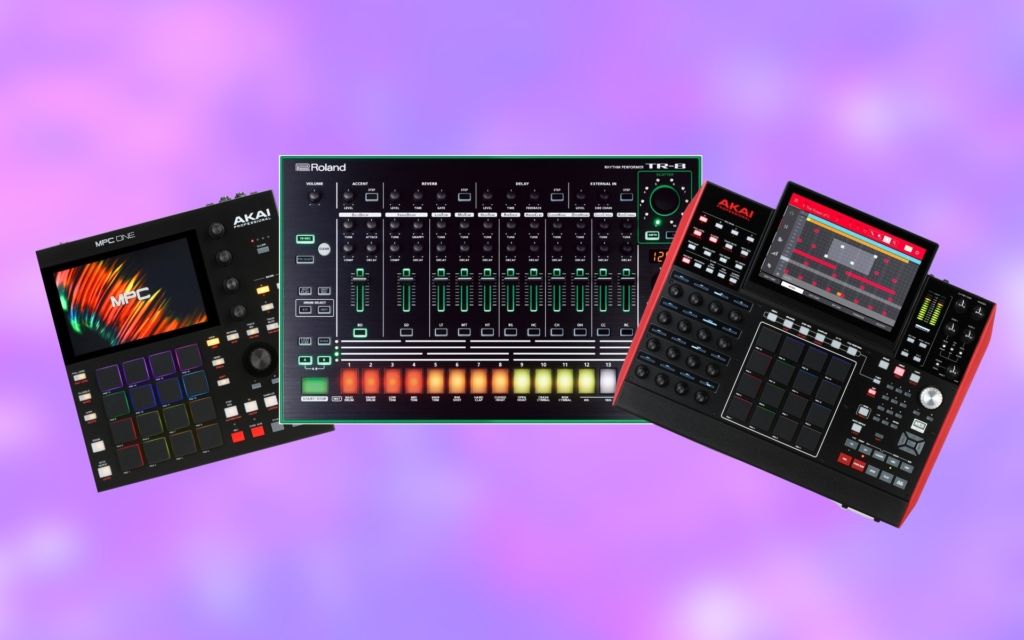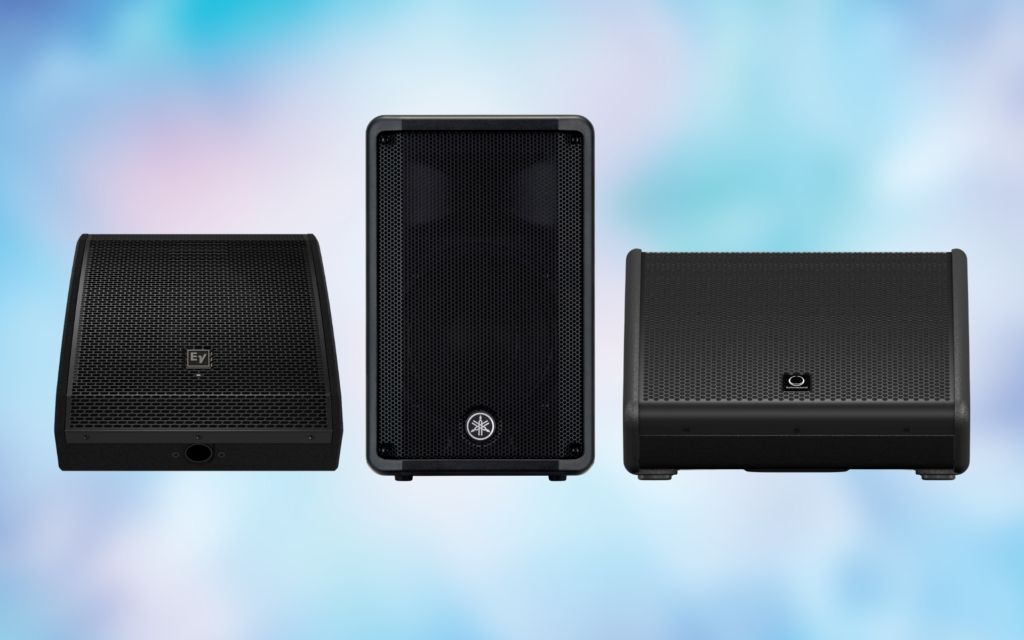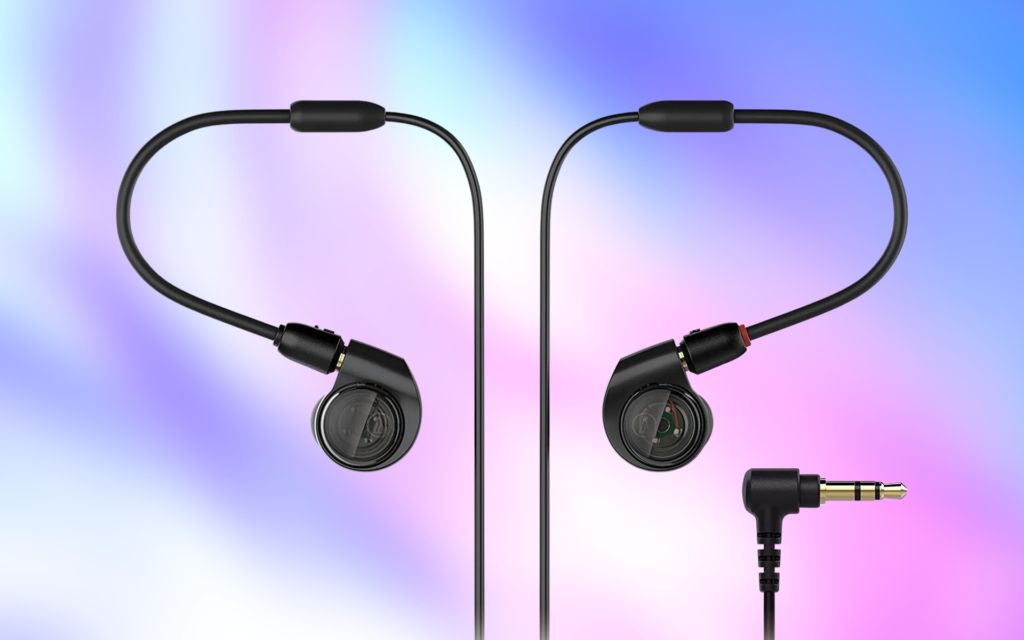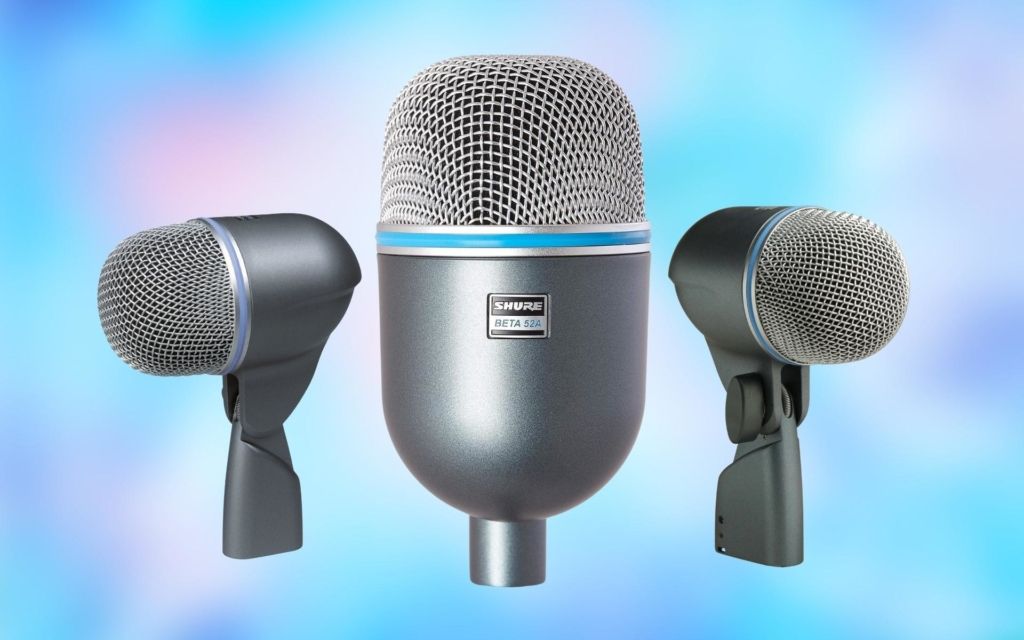I review products independently and only recommend products I would use myself. If you purchase through a link, I may earn an affiliate commission. Learn more.
Audio interfaces are arguably the most impactful digital recording devices that have ever been created. They allow drummers and other musicians to record their instruments without needing to book time in a recording studio.
The best interfaces for drum recordings must capture audio with pinpoint accuracy and a high degree of clarity. They must also be able to handle the dynamics of an acoustic drum kit and have enough input to facilitate recording the various drums.
This article identifies the best drum recording interfaces for all budgets, experience levels, and styles. You’ll find some more advanced devices with many adjustable controls and others that simplify the process.
Contents
- What are the Best Drum Recording Interfaces?
- How I Tested and Selected the Best Drum Recording Interfaces
- In-Depth Drum Recording Interface Reviews
- Drum Recording Interfaces Buying Guide
- Things to Consider When Buying Drum Recording Interfaces
- What Features to Look for in Drum Recording Interfaces
- Drum Recording Interfaces FAQs
What are the Best Drum Recording Interfaces?
How I Tested and Selected the Best Drum Recording Interfaces
I’ve owned several recording interfaces over the years, but I’ve also been able to test out different options when tracking in studios and recording demo tracks in a few home studio setups of friends.
I used that experience to compile this list, and there were a few main things that I checked when testing each interface.
The main thing I tested for was sound clarity, as that showed how good the drum recordings would be. I then looked at connectivity and interface controls. Finally, I made sure to test and review interfaces at different prices so that I could recommend options for various budgets.
Whether you’re tracking your first drum cover or upgrading your home studio, below you’ll find the perfect drum recording interface to suit your budget that will help you achieve pristine and professional sounding results.
In-Depth Drum Recording Interface Reviews
Focusrite Scarlett 18i20 (3rd Gen) USB Drum Recording Interface
Focusrite Scarlett 18i20 (3rd Gen) USB Drum Recording Interface Review
The winner of the best interface for recording drums is the affordable Focusrite Scarlett 18i20 3rd Gen USB Audio Interface. This is the best drum recording interface for any drummer looking to get started with recording drums.
The Focusrite Scarlett 18i20 is packed with pro-level features and 8 excellent quality mic preamps that offer incredible clarity. The interface utilizes high-performance converters that enable you to record and mix at up to 24-bit/ 192kHz.
This drum interface is the perfect tool for turning any space into a fully-fledged recording studio. It has 8 balanced XLR inputs which is more than enough to accommodate for a full set of drum microphones and overhead drum microphones. It has a total of 18 inputs and 20 outputs of incredible sound quality.
The drum recordings I’ve captured using the Focusrite Scarlett interface are superb, and I find that this interface is easy and straightforward to use, even for beginners.
Each knob corresponds to a different microphone channel input and there’s an intuitive display to follow.
The USB connectivity allows for seamless integration to any computer, and Focusrite uses streamlined software for connectivity called Focusrite Control.
The Scarlett 18i20 interface features ultra-low latency that means your drum recordings won’t suffer any lag or delay. This is really important to prevent drum recordings from sounding out of time, and another reason why this is the best drum recording interface for those starting out.
Last but not least, the Scarlett 18i20 includes a copy of Pro-Tools, meaning you can get started with drum recordings right away and you don’t need to spend extra on a DAW. I’ve always found ProTools quite hard to use, but it’s the industry-standard DAW, making its inclusion seriously valuable.
This drum recording interface boasts fantastic, clean sounds and it’s the best audio interface for those looking to record drums from home.
Pros
- Converts any space into a fully-fledged recording studio
- 8 Excellent quality mic preamps offer incredible clarity
- Pro Tools digital audio workstation included for free!
- Very low latency for tracking
Cons
- Setup can take a little while
- No manual included
Universal Audio Apollo Thunderbolt Drum Recording Interface
Universal Audio Apollo Thunderbolt Drum Recording Interface Review
A close runner up for the best audio interface for drums is the incredible Universal Audio Apollo, which is a world class audio interface that is packed with the very best sound quality features, processors and preamps.
This is a top of the range audio interface that boasts pristine AD/DA converters and UAD’s proprietary HEXA core processing for flawless plug-in integration. This interface offers the best specs in the industry.
I’ve used several UAD Apollos and I love the gorgeous and lush open sounds captured from its world-class processors, converters, and preamps.
The converters deliver optimum audio quality between 129db dynamic range and -118db. I was told by a studio expert that this is the lowest signal-to-noise ratio of any interface available.
The elite Unison preamps included offer a huge dynamic range and natural, crisp voicing that delivers unparalleled sound quality. The interface utilizes Dual Crystal clocking for producing pristine sounds.
You can find UAD Apollos in professional recording studios around the world because of their array of pro-level features and their legendary preamps with Unison technology. Recording drums with the UAD Apollo will bring incredible sonic detailing, texture and power to your recordings.
Also included with the Apollo interface is the Realtime Analog Classics Plug-In Bundle, which are some of the most accurate emulations of analog audio equipment ever created. These plug-ins sound amazing and they add immense depth, color and character to your recordings.
Pros
- Dual Crystal clocking supplies pure, artifact-free recording and solid stereo imaging
- Includes the UAD Realtime Analog Classics Plug-In Bundle
- Crisp voicing from the eight elite Unison preamps
- Converters offer incredible sonic detailing, texture and clarity
Cons
- Expensive price tag
- Better suited to expert producers
- Only 4 XLR direct inputs
Behringer U-PHORIA UMC1820 18x20 Drum Recording Interface
Behringer U-PHORIA UMC1820 18x20 Drum Recording Interface Review
The Behringer U-Phoria UMC1820 Audio Interface is the best audio interface for recording drums on a budget! This is an incredible value piece of equipment that features 8 state-of-the-art MIDAS designed mic preamps that offer pristine sound quality.
Despite its affordable price tag, I found this to be a powerful and highly versatile audio interface that is perfect for recording drums.
I’ve used this Behringer interface for several drum covers and it is remarkably easy to use, and it provides crystal clear sounds. It is ultra easy to use for beginners and delivers professional audio quality.
The USB connectivity is blazingly fast and the interface works seamlessly with any preferred DAW, such as Logic, Pro Tools or Cubase. The UMC1820 offers zero-latency recording, which means you can record drums without experiencing any delay or lag in the returning signal.
The UMC1820 is a powerful recording interface that takes advantage of exceptional 24-bit/ 192 kHz converters for its price range. The 8 included XLR inputs will allow you to record a full drum set plus overhead mics and even a room mic.
The Behringer UMC1820 offers exceptional value for money and it features preamps that give some more expensive competitors a run for their money. The overall construction and build quality of the unit is of a very high standard, which is a testament to the German design and engineering.
If you are looking for the best interface for recording drums and you are on a budget, then look no further. This is a very impressive piece of hardware that boasts an array of pro-level features at a very affordable price. It is perfect for small home studio setups and will help you capture quality drum sounds.
Pros
- The best audio interface for recording drums on a budget
- Pro-grade MIDAS preamps for pristine clarity
- Robust build quality
- Low latency recording
Cons
- No software included
- Lack of installation support
Presonus Studio 1824C USB Drum Recording Interface
Presonus Studio 1824C USB Drum Recording Interface Review
The Presonus Studio 1824C USB Audio Interface is a full-featured studio quality audio interface that is ideal for producers and drummers looking at recording a full drum set. It’s an affordable yet high quality interface with ample connectivity and an ultra-high-definition sound.
The Presonus Studio 1824C takes advantage of professional grade XMAX mic preamps that deliver high headroom, deep lows, smooth highs and a rich overall sound.
This drum interface has been designed to offer a portable and high definition recording solution to aspiring producers at an affordable price.
With high quality mic preamps, easy-to-use on-board monitor mixing and quality converters, the Presonus Studio 1824C USB audio interface is one of the best audio interfaces for recording drums on the market.
My main takeaway from this interface after trying it out was that it offers studio-quality sound at a great price.
This is a complete all-in-one recording package that is perfect for home studios and it is compact enough for easy transportation for remote recording. The high quality XMAX preamps alongside the 24-bit/ 192 kHz conversion makes this an amazing drum mic interface for even the most demanding producers.
Pros
- Professional grade XMAX mic preamps
- High quality 24-bit/ 192 kHz conversion
- Low latency
- Studio quality sound at a great price
Cons
- Focusrite and Behringer interfaces offer better value
- No stereo monitoring
- Presonus software is clunky and sometimes problematic
Behringer UMC404HD Drum Recording Interface
Behringer UMC404HD Drum Recording Interface Review
Last but not least we have the Behringer UMC404HD Audio Interface, and this is a compact 4-channel interface that is perfect for smaller drum recording sessions, where all you need is 4 microphones.
The Behringer UMC404HD is the ultimate compact studio in a box. It takes advantage of 4 astonishingly pure MIDAS mic preamps, which include +48 volt phantom power for condenser overhead microphones It all runs through studio-grade converters for supreme sound quality.
I found the best thing about this particular drum mic interface to be the price. If you want to record drums with up to four microphones on a budget, then this is the best option available.
It comes in at such an affordable price and I was impressed by how easy to use it was. The UMC404HD worked seamlessly with any DAW I tried and the USB connectivity made it a breeze to work with.
Much like its bigger brother – the UMC 1820, the UMC404HD also has zero-latency direct monitoring and the same onboard features to help your drums sound amazing.
It really is an exceptional piece of equipment for the money and it will help you obtain quality sounds with minimal fuss.
Pros
- +48 volt phantom power for condenser microphones
- Pure MIDAS preamps
- Best audio interface for recording drums with 4 mics
- Low latency recording
Cons
- Only 4 XLR mic inputs limits recording flexibility
Drum Recording Interfaces Buying Guide
Drum recording interfaces allow you to record your entire drum set using multiple microphones. Ideally, an interface should deliver professional-quality recordings and make it easy to get the sound that you desire.
The number of audio interfaces that drummers have to choose from has increased significantly in recent years, and while on the one hand, this is a positive as it provides more options, it can also make it difficult to separate the good from the not so good.
It’s important to understand the various features of drum recording interfaces so that you can narrow down your search.
Here’s a breakdown of what you should look out for when choosing an audio interface for drum recordings.
Things to Consider When Buying Drum Recording Interfaces
Extensiveness
The number of inputs that are installed on an audio interface will determine how many microphones you can use to record simultaneously. A smaller four-input interface will suffice if you like a limited mic setup like the Glyn Johns three-mic technique. You may need eight or more inputs if you want to mic each drum in your set individually.
Sound Quality
Drum recording interfaces have onboard mic preamps, which hugely impact how any recordings you make with the device sound. Some mic input preamps are designed for a warmer tone, while others have a more transparent sound.
Connectivity
USB, Thunderbolt, and Firewire are three common forms of connectivity used with audio interfaces. Check that the device is compatible with your laptop or computer or whether you need an adapter.
Converters
AD/DA converters are responsible for transforming analog audio into digital, and the better quality this component is, the more clarity the drum recording interface will record with.
What Features to Look for in Drum Recording Interfaces
Inputs & Outputs
When choosing an audio interface, it’s essential that you select one that provides you with an adequate number of inputs and outputs.
For certain styles of drum recordings, having four inputs may be enough. This will allow you to mic up the kick, snare, and overheads. However, if you want to record drums with more detail, you’ll need additional inputs.
Many recording engineers prefer to place a microphone near every drum in the set. The advantage of this is that it makes balancing easier, because the level of each individual drum can be set with precision during the mixing process.
Room microphones are used to capture the sound of the full kit, and these recordings can then be blended with the more directional mics used to record the individual drums.
I’d recommend considering the maximum number of microphones you are likely to want to use for your drum recordings and ensuring that the interface you choose is extensive enough to facilitate this.
Some audio interfaces have as many as 18 inputs and 20 outputs, which is enough for even the largest drum and microphone setups.
Mic Preamps
A drum recording interface is only as good as the mic preamps installed on its inputs. If this component lacks quality, it will be difficult to achieve a great sound when recording drums.
The things to look out for when analyzing the onboard preamps on drum interfaces are their dynamic range and their coloration.
Some mic preamps are designed to provide a warmer, vintage sound that takes inspiration from analog recording gear. Other interfaces are designed for the crisper, modern sound that many drummers prefer.
Researching the mic preamps that come with a drum recording interface is advised if you’re hoping to achieve a specific sound.
Controls
All audio interfaces come with a staple set of controls. These include gain controls for the inputs and level controls for the monitors and headphones connected to the device.
Some interfaces include a more extensive control layout than others. This makes it easier to set the device up to work exactly as you need it to without relying too heavily on adjusting the recordings in your DAW.
Gain boost switches and buttons are often included on audio interfaces. They are used to quickly increase the level of the inputs so that your recordings are at an optimal level. If you use low-gain dynamic mics when recording drums, this feature will be helpful.
Drum Recording Interfaces FAQs
Should Drums be Recorded in Mono or Stereo?
Recording in mono and stereo can both be beneficial for specific scenarios, but in most cases, it’s better to record drums in mono. This makes it easier to mix the drums after recording, as the tracks will be individual rather than one audio file.
Stereo is a good option when recording live drums, as it can be used to blend the entire sound of the drum set with any other instruments and vocals.
Do I Need a Preamp for Recording Drums?
Although it’s not essential to use a preamp when recording drums, doing so can certainly enhance the sound of your recordings. A preamp is used to shape the tone and dynamic qualities of the audio signal before they reach the audio interface.
Drum recording interfaces all have mic preamps installed on the inputs, but some may benefit from the additional freedom that is afforded them when using an external preamp.

